
The Uniqueness of Human-Made Art and Design in the Age of AI
In an era marked by technological strides, where artificial intelligence (AI) pervades various facets of our lives, a captivating question emerges at the intersection of innovation and creativity: Can AI truly replicate the ingenuity and emotional depth found in human-made art and design? As AI makes its way into the heart of the interior design industry, it brings both promises of efficiency and challenges to the authenticity that defines human creativity. In this exploration, we delve into the harmonious interplay of AI-generated concepts and the timeless essence of human artistry, unveiling how these parallel forces are shaping the landscape of interior design. From AI art images to the hands of interior designers, we embark on a journey that underscores the enduring importance of human touch, perspective, and narratives within an AI-enhanced world.
AI vs. Interior Design: A Delicate Balancing Act
As AI's capabilities expand, the debate over its role in interior design intensifies. Can AI truly replace the nuanced decisions, cultural sensitivities, and emotional considerations that human designers bring to the table? The allure of AI-generated images and their potential to revolutionize design processes can't be denied. However, the question looms: Does efficiency equate to authenticity?
AI's proficiency in analyzing data, generating layouts, and predicting trends offers a promising glimpse into the future of interior design. Yet, the creative intuition, empathy, and understanding that human designers possess remain the bedrock of the industry.
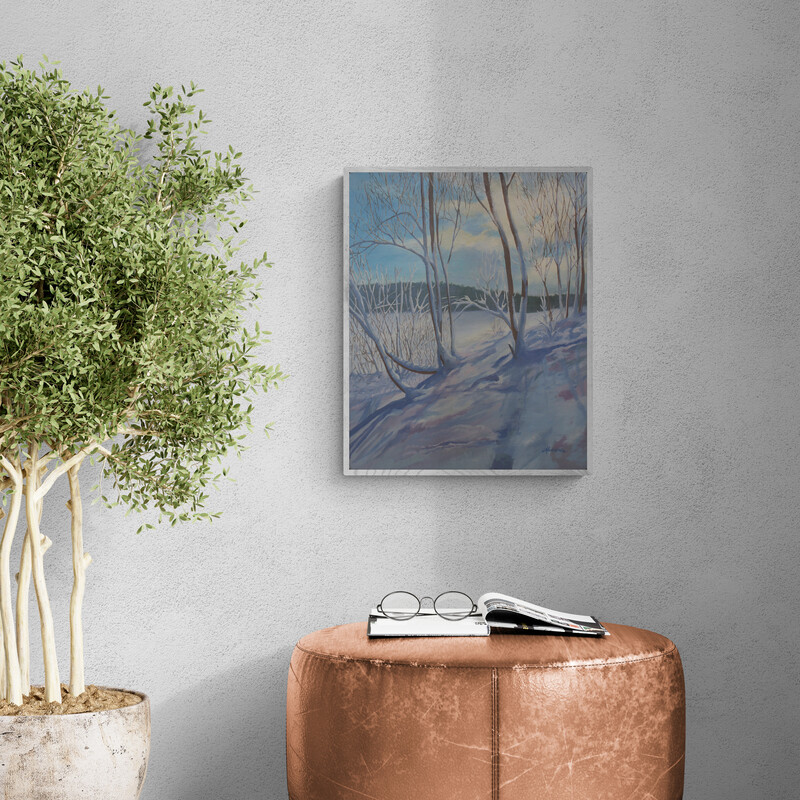
Landscape painting, Winter Magic, by artterra artist Kathy Teasdale. she focuses on the beauty of wildlife of southern Quebec's Eastern Townships.
As AI progresses, it is crucial to strike a balance that embraces its strengths while preserving the unique human perspective—a perspective that encapsulates stories, emotions, and cultural nuances within the design realm. In this ongoing discourse of AI and interior design, the distinction between technological advancement and human ingenuity stands as a testament to the timeless significance of human-made artistry.
AI's Footprint on the Interior Design Industry
The advent of AI-art has carved a new path within the industry, presenting designers with an array of tools to enhance their creative process. These images, created and generated through intricate algorithms and machine learning, offer glimpses into potential design concepts, colour schemes, and spatial arrangements that were once the domain of human imagination alone.
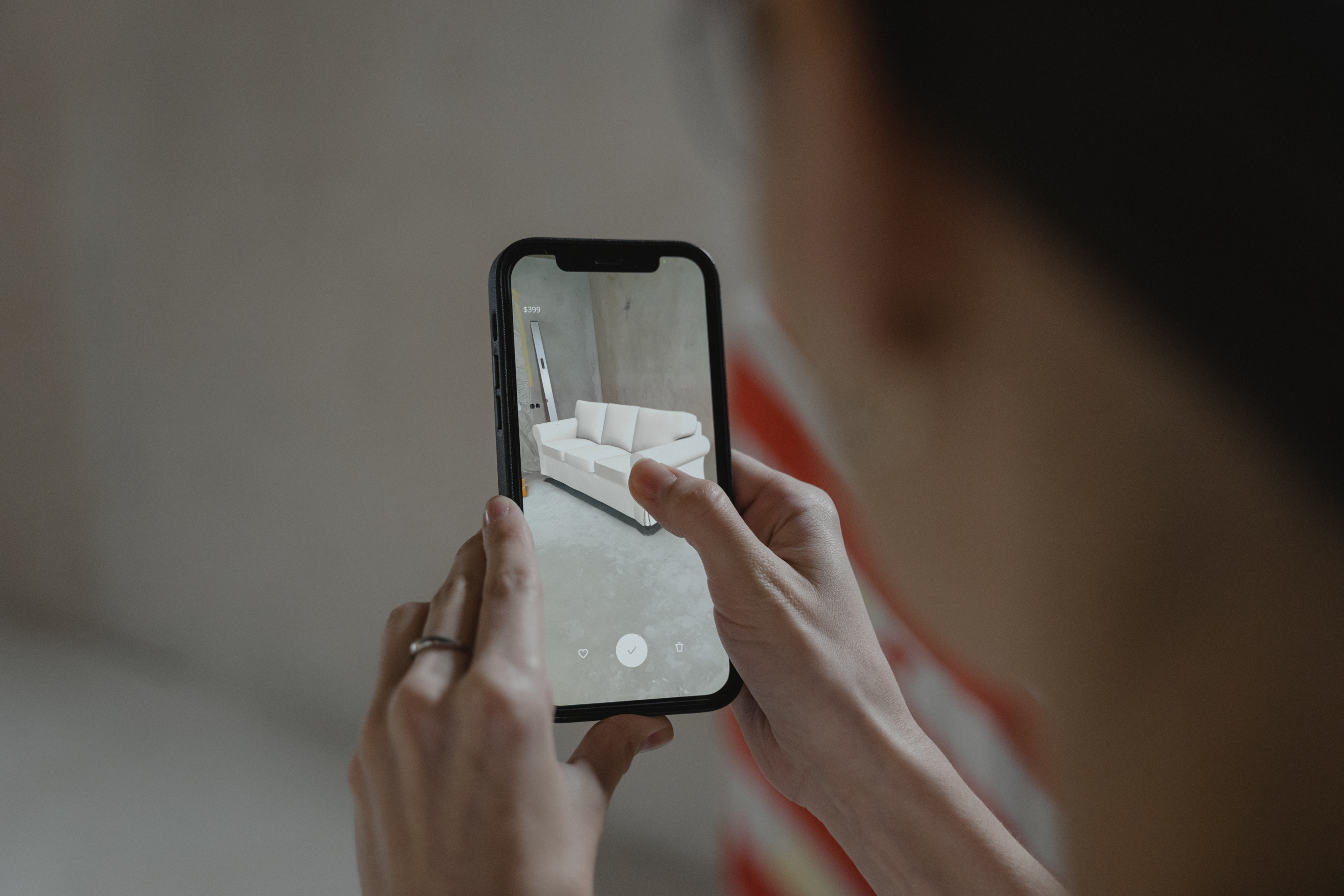
Interior designers are now equipped with augmented reality, a virtual canvas painted by AI, allowing them to explore diverse options efficiently. These AI-generated insights can serve as springboards, sparking new ideas and accelerating the design cycle. However, it's important to remember that while AI may lay out the groundwork, the transformative element—the interpretation of emotions, experiences, and individual stories—remains a distinctly human endeavour. As we navigate this evolving landscape, we celebrate AI's role as a catalyst for creativity, yet keep in mind that the soul of design is deeply rooted in human connection and expression.
A Glimpse into the Future: AI in Interior Design
The future of interior design: AI in interior design holds the promise of a dynamic partnership between technology and creativity. As AI advance, it offers designers a powerful toolbox to explore uncharted territories and reimagine design possibilities. AI's ability to analyze trends, suggest layouts and predict design directions can undoubtedly reshape the landscape of interior aesthetics.
However, the future isn't merely about AI's dominance. It's about a harmonious convergence that celebrates the fusion of technological innovation and human insight.
AI art can provide a starting point, but the narrative, the emotions, and the cultural context—the very essence of design—still originate from the minds and hearts of human designers. The journey ahead is an exploration of how AI can amplify human creativity while coexisting with the irreplaceable human touch that defines the artistry of interior design.
Human Creativity in the AI Age
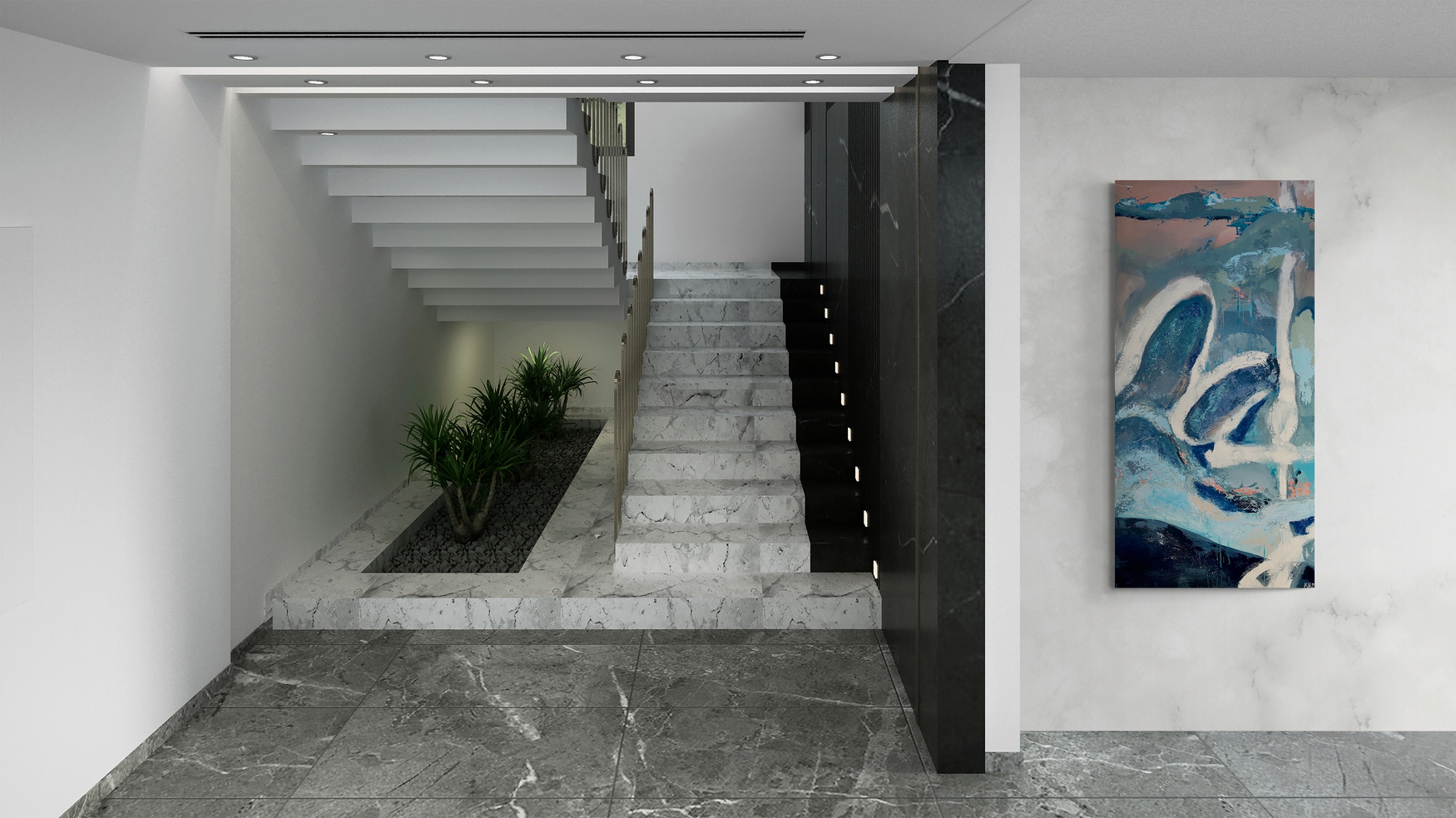
"Is it possible for life to become inappropriate?" by Kateryna Kobylianska
In an era where algorithms analyze patterns and generate images, the resounding question remains: What sets human-made art and design apart? The answer lies in the inherent creativity, empathy, and unique perspective that human beings bring to their craft.
The human touch in interior design goes beyond aesthetics—it delves into the intangible realm of emotions, experiences, and culture. Each design reflects a narrative, a story that bridges the gap between the space and its occupants. AI may offer efficiency and data-driven insights, but it is the human touch that infuses interior designs with soul and makes spaces resonate with the human experience.
As we navigate the age of AI, the importance of human-made art and design cannot be overstated. Designers are more than creators; they are storytellers who weave narratives that evoke emotions and memories.
In this dance between technology and creativity, human artistry emerges as an irreplaceable force, ensuring that design remains an embodiment of culture, identity, and human connection.
AI's Role in Interior Design: Enhancing Efficiency, Elevating Creativity
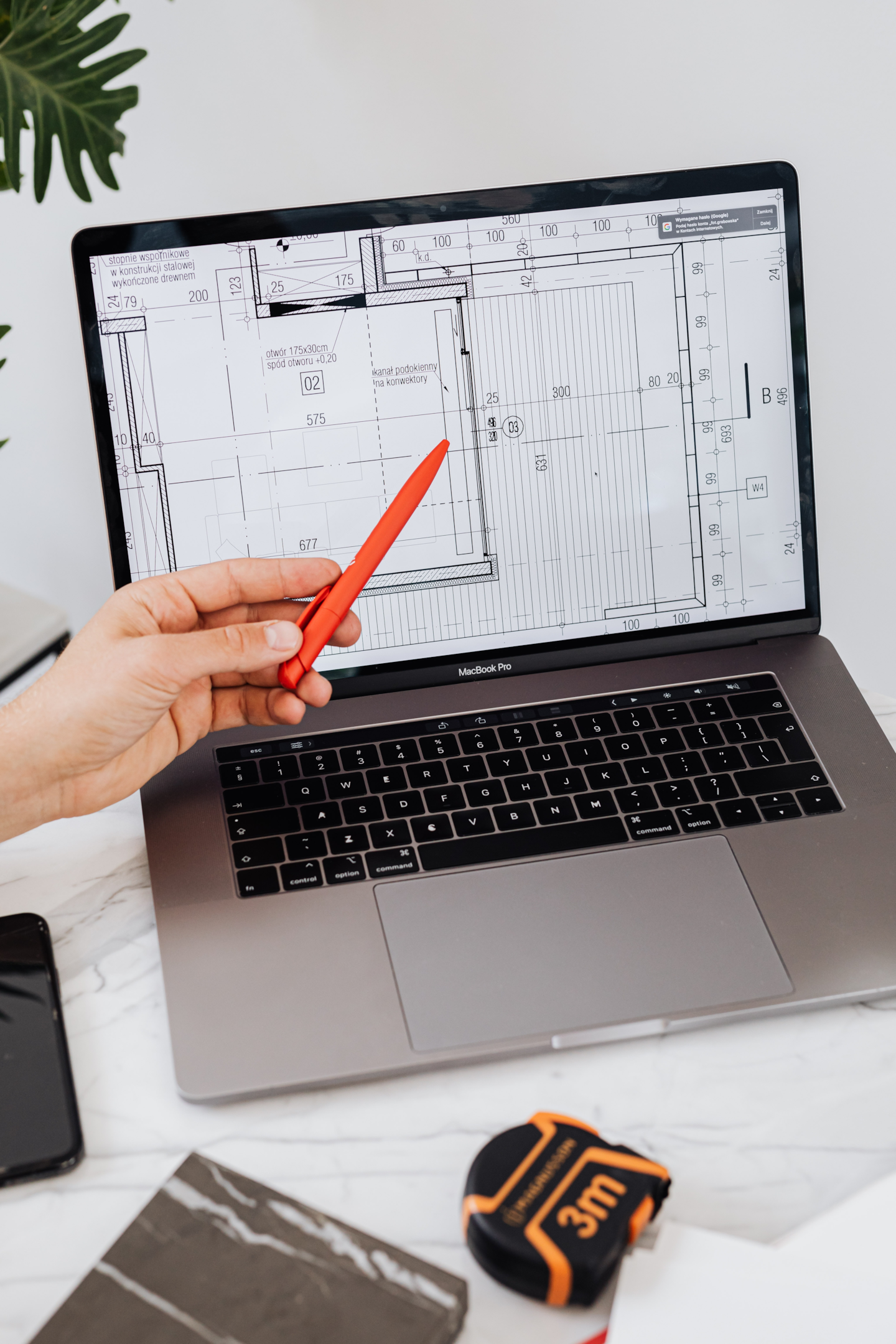
The marriage of AI and interior design is not a tale of substitution but of collaboration. AI's prowess in analyzing data trends and generating design concepts streamlines the creative process, freeing designers from repetitive tasks. This symbiotic relationship between AI and interior designers empowers the latter to amplify their creative visions, explore uncharted territories, and dive deeper into the art of storytelling.
By offering AI-generated insights as a starting point many artists, designers can embark on imaginative journeys that transcend traditional boundaries. These AI-generated concepts, born from patterns and trends, serve as the canvas on which artists paint their unique narratives. The beauty of this collaboration lies in the interplay between AI's analytical capabilities and human designers' emotional intelligence, resulting in designs that seamlessly marry aesthetics with authentic human experiences.
AI-Generated Art: Where Algorithms Paint Emotion
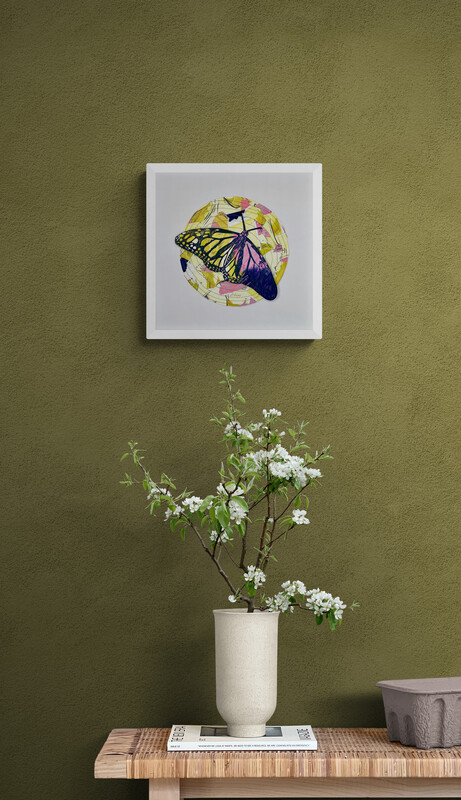
Arterra Artist, Lorna Livey's, Metamorphosis Mandala #81 repurposes work from over 45 years as a printmaker into new art.
The emergence of AI create art has ignited discussions about the capabilities of artificial intelligence in the creative realm. AI can analyze existing art and artistic styles and generate images that mimic renowned artists, leading to contemplations on whether AI could surpass human artistry.
However, the essence of human-made art transcends replication. While AI may adeptly replicate patterns, it lacks the innate emotional depth and the ability to imbue ai generated artworks with personal stories and cultural influences. The brushstrokes of a painting, the intricacies of a sculpture, and the journey of the artist culminate in an experience that goes beyond the visual realm. AI-art, while fascinating, is a testament to algorithmic prowess, but human art remains a manifestation of the human experience itself.
The Marriage of AI Art and Human Artistry
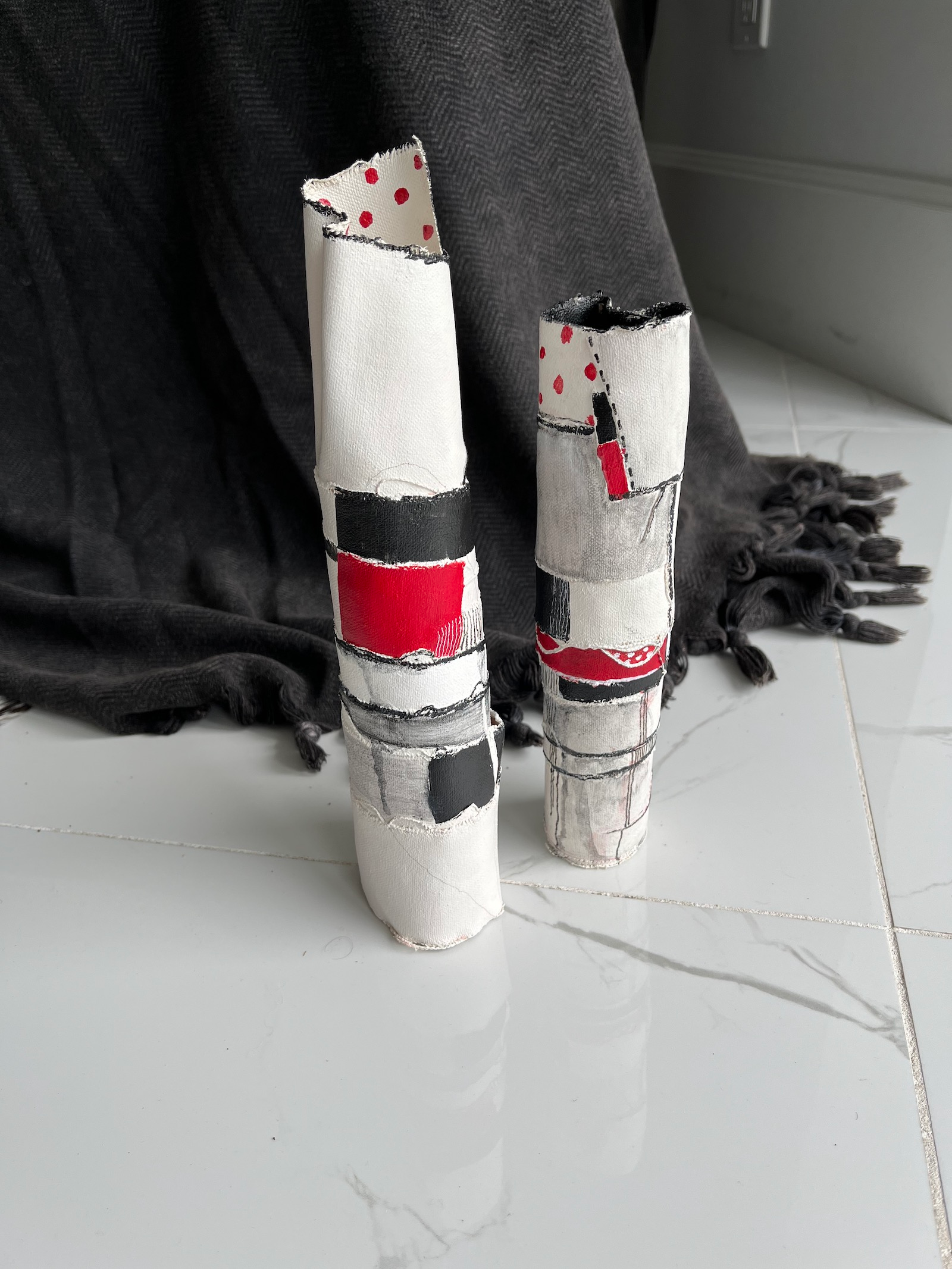
artterra artist, Sharon Habib's Blood Moon, is inspired the natural results of weathering and decay – cracks in concrete or pavement, tree barks, fungi and lichens, peeling paint, water stains and the like. Her work is at times textured to resemble weathered surfaces.
Can AI art replace human art? This query lies at the heart of a debate that hinges on technological prowess and emotional resonance. While AI art is a commendable feat of programming, it lacks the essence that makes human art connect on a visceral level.
AI-art are products of algorithms analyzing data, while human art is a result of emotional expression, individual stories, and cultural contexts. Each brushstroke, each colour choice, each image, and each composition stem from the artist's unique perspective, something algorithms can't emulate.
AI art may find its place in the artistic landscape, but the power of human artistry transcends algorithms, touching the realms of sentiment, nostalgia, and the shared human experience.
The Heart of Design: Where AI Art and Human Artistry Diverge
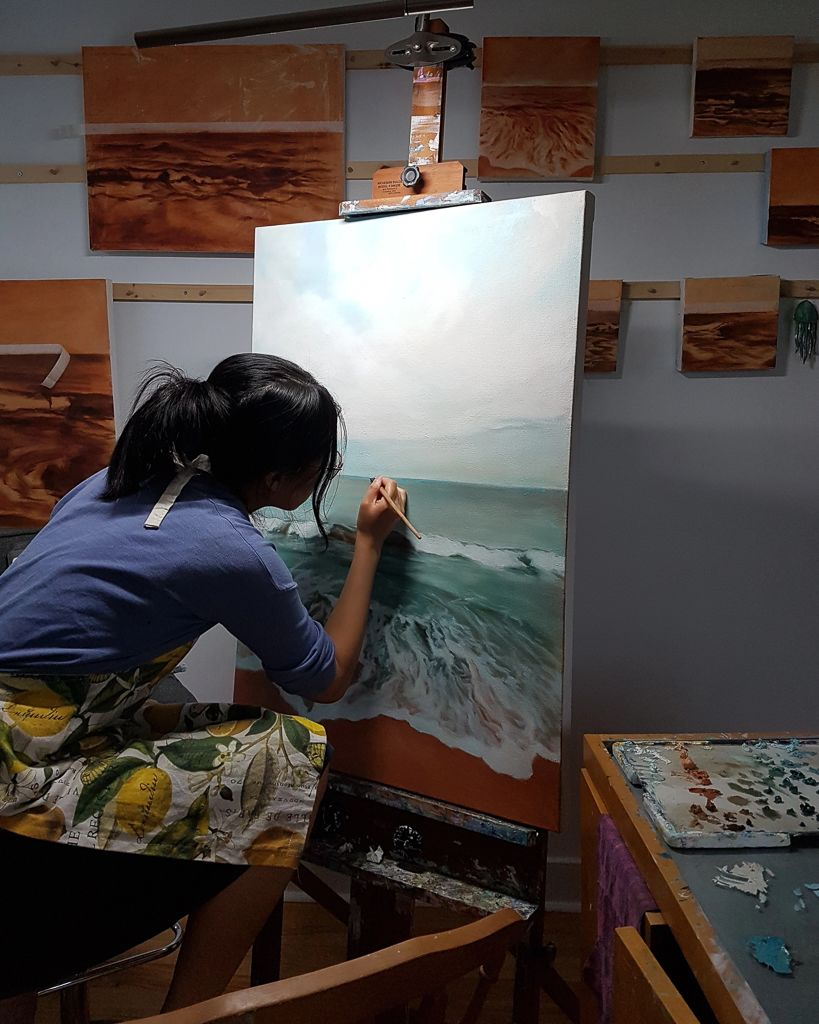
Artterra Artist, Grace Lane Smith in action. Painting one of her landscape paintings.
While AI- art holds intrigue and potential, it cannot replicate the intricate dance between human emotions and creative expression. Human-made artistry is a fusion of experiences, cultural influences, and personal stories that breathe life into each stroke of the brush, each pixel of the canvas.
AI art, on the other hand, is a product of algorithms seeking patterns and replicating styles. It may impress with its mimicry, but it lacks the genuine authenticity that resonates with individuals on a profound level. The human journey woven into each piece of art, reflecting the artist's growth, experiences, and moments of inspiration, cannot be replicated in lines of code.
The Unseen Thread: How AI Art and Human Artistry Converge
Is AI art the same as human art? The distinction lies in their origins and purposes. AI art is born from patterns and data, while human art emerges from the wellspring of human experience. However, there exists a point of convergence—AI art can serve as an inspirational catalyst other artists, sparking new ideas and pushing artists to explore uncharted creative territories.
In this intersection, the boundary between technology and humanity blurs. Human artists draw inspiration from AI's innovative approaches while remaining steadfast in their ability to breathe life into art, transforming colours and lines into narratives that stir the soul.
Shaping Tomorrow: AI's Influence on Design Aesthetics
AI's presence in the design realm doesn't merely streamline processes; it can influence aesthetic norms. By analyzing data trends, AI can forecast design directions and emerging patterns. However, the influence of AI should not overshadow the essence of design—the emotional resonance, cultural sensitivity, and storytelling that define human artistry.
In this symbiotic relationship, designers become curators of the future, integrating AI-generated insights into their creative process while maintaining their role as interpreters of the human experience.
As AI shapes aesthetics, it's the harmony between technology and human creativity that moulds the design landscape into a reflection of both innovation and the timeless essence of human expression.
Design Reimagined: AI as a Catalyst for Creativity
AI's integration into interior design is not about replacing designers; it's about revolutionizing the creative journey. AI's ability to analyze vast datasets and generate design options serves as a springboard for designers to explore novel ideas and possibilities.
AI-generated concepts become the starting point, sparking the imagination and enabling designers to delve deeper into their creative realms.
This synergy transforms the designer's role in ai systems from that of a sole creator to that of a collaborator with AI, weaving technology's precision with human emotions, cultural awareness, and artistic interpretation.
The Stories Spaces Tell: The Role of Human Artistry

Artterra artist Pamela Paulenko's latest paintings, a tribute to the often-overlooked inhabitants of our precious ecosystems.
Amidst the algorithms and data, the narrative heart of design beats strongly. Interior designers don't merely arrange furniture and colours; they craft stories that spaces tell. The emotion-laden narratives of human life—the celebrations, reflections, and aspirations—are etched into every design decision.
While AI-generated insights can guide layouts and aesthetics, it's the human touch that provides the soul. The stories woven into spaces are a reflection of human experiences that resonate with occupants on a deeply personal level. This irreplaceable connection between space and story is where the human touch shines brightest.
AI's Odyssey in Design: A Collaborative Expedition
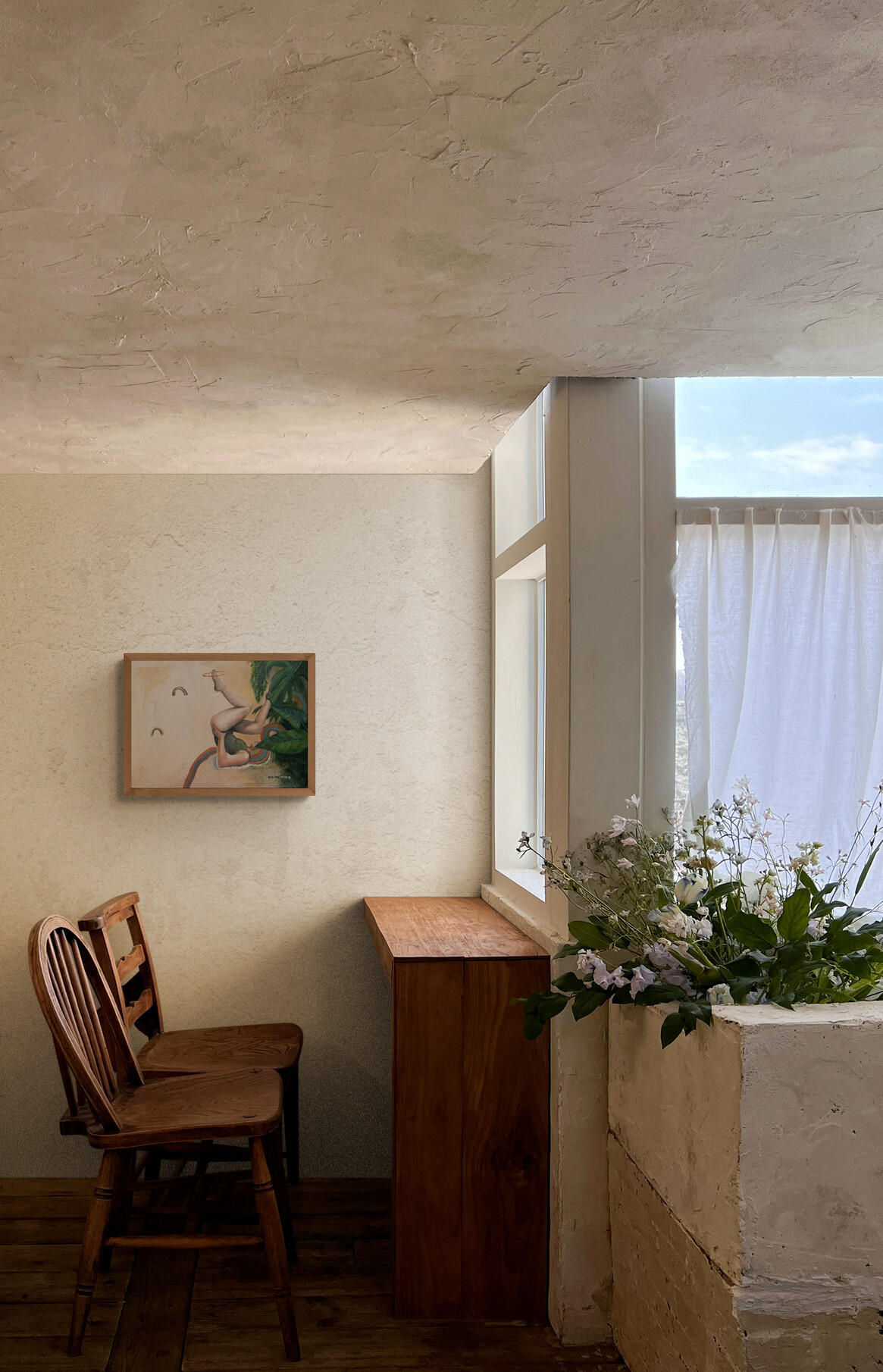
Virtual Staging of a Rustic interior space with artwork by artterra artist, Rachel Marie.
The journey toward the future of design is marked by collaboration, not displacement. AI's predictive prowess and design insights are valuable companions for designers, offering a lens through which to view emerging trends and possibilities. Designers, in turn, imbue these insights with emotional depth, cultural resonance, and the intangible elements that define human creativity.
AI becomes a guiding star in the vast cosmos of design options, and designers are the explorers who navigate its light to create spaces that transcend mere functionality. This synergy between technological advancement and human innovation paints a picture of design's evolution—one that honours tradition while embracing progress.
AI's Impact: Beyond Efficiency to Authenticity
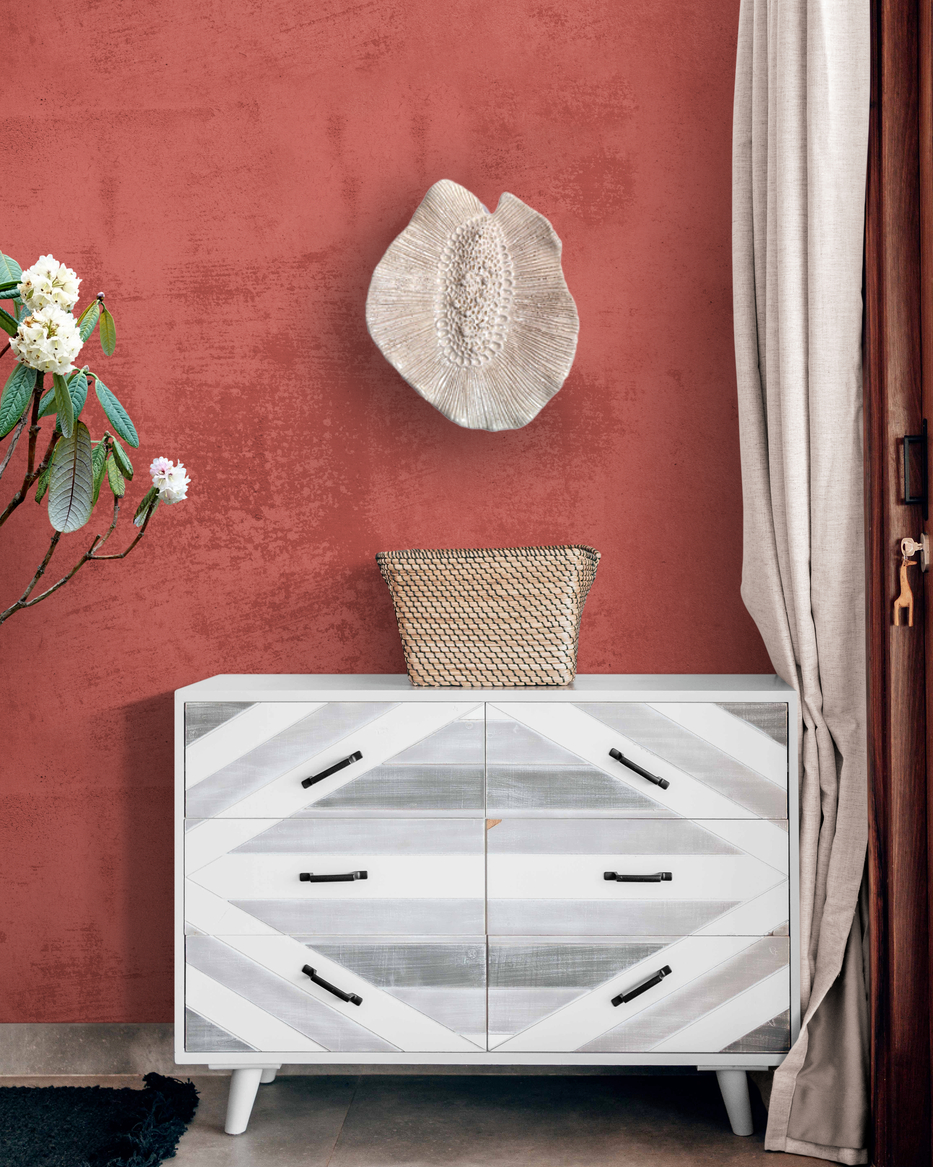
Gina Jacklin 3d wall art, Nemesia inspired by scanning electron micrograph (SEM).
As AI shapes the trajectory of interior design, its impact reaches beyond efficiency to authenticity. AI enhances the creative process by providing data-driven insights and innovative suggestions, but it can't replace the genuine connection designers foster with clients.
The future isn't one where AI takes over design—it's one where AI and human artistry coexist, intertwining in a dance that marries technological capabilities with human sensibilities. The marriage of AI-generated insights and human interpretation results in designs that embody the essence of culture, identity, and emotion.
As AI continues to shape design's horizons, it's the unique fusion of technology and humanity that holds the potential to create spaces that inspire, resonate, and stand as testaments to the enduring significance of human-made art and design.
Redefining Aesthetics: The Synergy of AI and Human Vision
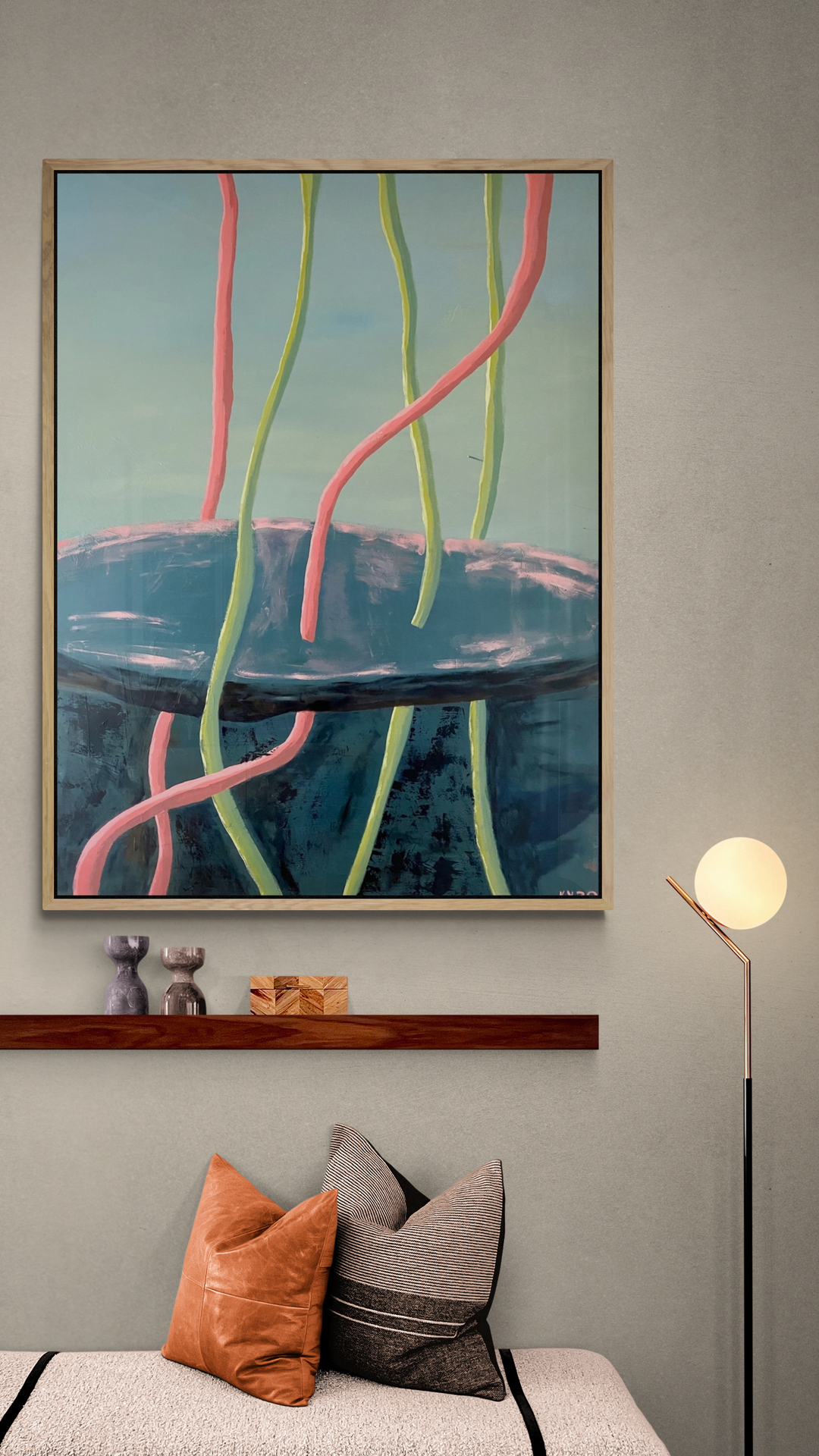
"Splinter" painting by Kateryna Kobylianska. She creates captivating abstract art that explores the intricate landscape of the human mind.
The dynamic interplay between AI and human designers transcends the realm of efficiency—it extends to reshaping aesthetic norms. AI's ability to generate art, analyze data trends and forecast emerging patterns gives designers a glimpse into design's future landscape.
However, the aesthetics of design are not merely about visual appeal; they encapsulate the depth of human emotion and culture.
The collaborative fusion of deep learning, AI's insights and human creativity moulds a new design aesthetic—one that is informed by data but enriched by human sensibilities, resulting in spaces that are not only visually captivating but also resonate on a profound emotional level.
Artistry's Evolution: AI as a Stepping Stone
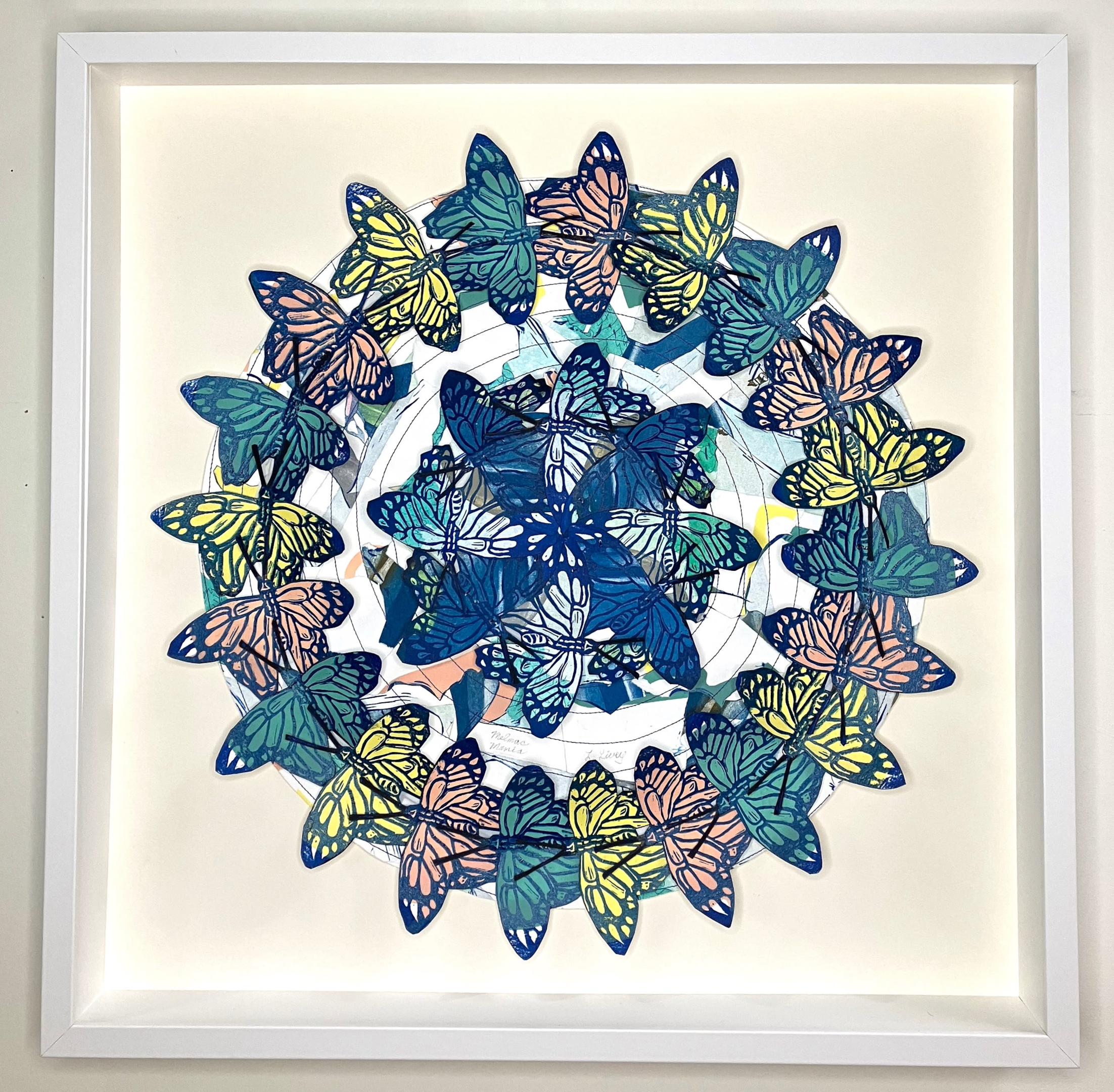
Latest art piece Melmac Mania by Arterra Artist, Lorna Livey's in her Metamorphosis Series
In the grand tapestry of artistry's evolution, AI serves as a stepping stone, guiding human creators toward uncharted territories. AI-generated concepts such images offer designers new angles from which to approach their work, sparking innovation and challenging artistic boundaries.
AI's entry into the creative process is not a replacement but a catalyst for growth. The amalgamation of technology and human ingenuity propels design forward, enabling designers to break free from conventions and craft spaces that transcend the ordinary, breathing life into the extraordinary.
Craftsmanship in the AI Era: Cultivating More Than Human Design
"More than human" design encapsulates the idea that design goes beyond functional utility—it encapsulates the stories, emotions, and cultural narratives that human beings infuse into their creations. While AI adds a layer of precision, it's the human touch that goes beyond the mechanical, crafting designs that connect with the essence of what it means to be human.
In an era of algorithms and data, design remains a manifestation of human empathy, understanding, and artistry. Designers are not just creating spaces; they are creating experiences that evoke emotions, foster connections, and serve as embodiments of human identity.
Conclusion: A Tapestry Woven by Humanity and Innovation

Sandra Veillette's latest art piece L’écoute
As we reflect on the intertwined narrative of AI and human-made art and design, the essence of the journey comes into focus. The future for an interior designer is not a dichotomy of AI vs. human, but a synergy—a partnership that amplifies the strengths of both while preserving the irreplaceable qualities that make design a deeply personal and cultural endeavour.
AI-generated images and insights enrich the canvas of creativity, offering designers new ways to explore, experiment, and create images they envision.
However, the true magic lies in the stories woven by human hands—the narratives, emotions, and cultural nuances that transform spaces into living experiences.
In this ever-evolving landscape, the heart of design remains the heart of humanity itself. As AI shapes design's trajectory, it's the enduring significance of human-made art and design that emerges as the beacon guiding the way forward—a testament to the timeless power of creativity, innovation, and the boundless imagination of the human spirit.
